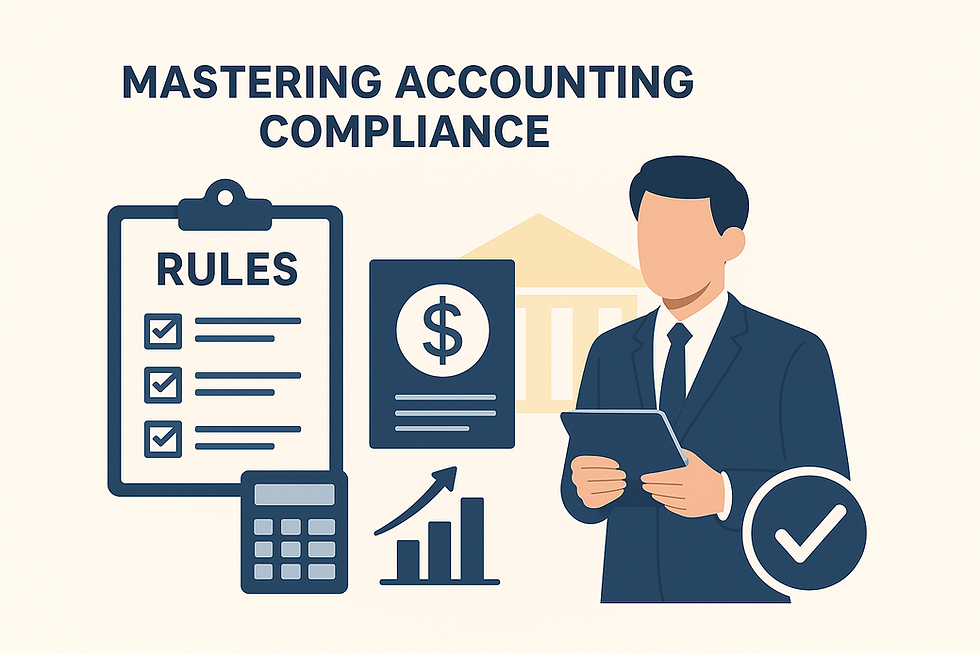Corporate Borrowing and Charge Registration: Legal Compliance Under the Companies Act, 2013
- kanumillinagakarth
- Jun 2
- 3 min read

Introduction:
In the corporate finance world, companies often rely on external borrowings to fund expansion, working capital, or capital expenditures. These borrowings are generally secured by offering assets of the company as collateral, creating a “charge” in favour of the lender. Under the Companies Act, 2013, the creation and registration of charges is not just a procedural formality but a vital compliance requirement. Failure to register a charge can have serious legal consequences, including the charge being rendered void against the liquidator or other creditors. This blog delves into the compliance framework related to charges under the Companies Act, 2013, and provides an overview of the key MCA forms involved.
What is a Charge?
A charge is defined under Section 2(16) of the Companies Act, 2013 as an interest or lien created on the property or assets of a company, or any of its undertakings, as security for the repayment of a loan or performance of any obligation. It can be created by way of a mortgage, pledge, hypothecation, or any other form of lien.
Different types of charges:
Charges can be broadly classified into two categories:
Fixed Charge:
A fixed charge is created on a specific, identifiable, and tangible asset (like land, building, or plant & machinery). The company cannot dispose of the asset without the consent of the charge holder.
Floating Charge:
A floating charge is created over a class of assets (like inventory, receivables, or stock-in-trade) that changes in the normal course of business. The charge "floats" until a default occurs, after which it crystallizes into a fixed charge.
Why Register Charges?
Registering charges under the Companies Act, 2013 is essential for several reasons. Firstly, it boosts investor confidence, as it reflects strong financial discipline and good corporate governance. When a company maintains proper records of its liabilities and complies with statutory requirements, it sends a positive signal to investors, lenders, and other stakeholders. Secondly, registration of charges helps create a public record of encumbrances on the company’s assets. This ensures transparency and allows any interested party to assess the company’s financial commitments before entering into any transaction. Lastly, registered charges determine the priority of lenders in case of enforcement or liquidation. In the event of default, lenders with registered charges have a clear, legally enforceable claim over the secured assets, giving them priority over unsecured creditors or later charge holders.
Procedure to Register Charges:
Step | Description |
1. Create the Charge Agreement | Execute a loan or charge document outlining the terms and conditions between the company and the lender. |
2. Filing with ROC | File the prescribed e-Form (CHG-1 for non-debenture charges or CHG-9 for debenture-related charges) along with the necessary documents. |
3. Payment of Fees | Pay the applicable filing fees to the MCA, based on the company's authorized capital. |
4. Verification and Certificate | The ROC examines the filing, and upon satisfaction, issues a Certificate of Registration in Form CHG-2. |
5. Modification/Satisfaction | If the charge is modified or fully repaid, the company must file the appropriate forms (e.g., CHG-3, CHG-4). |
Other relevant forms for Charges:
The following are the key MCA forms that a company must be aware of in relation to charges, especially when a charge is created on any loan it has raised.
Form | Purpose | Key Details |
CHG-1 | Registration of creation or modification of charge (other than debentures) | To be filed within 30 days of charge creation/modification. Extension up to 60 days with additional fees. |
CHG-2 | Certificate of Registration of Charge | Issued by ROC upon successful registration of charge filed via CHG-1 or CHG-9. |
CHG-3 | Certificate of Modification of Charge | Issued by ROC for modification of an already registered charge. |
CHG-4 | Intimation of Satisfaction of Charge | Filed when a charge is fully repaid/satisfied. Must be filed within 30 days of satisfaction. |
CHG-5 | Memorandum of Satisfaction of Charge | Acknowledgement issued by ROC after verification of CHG-4. |
CHG-6 | Notice of Appointment or Cessation of Receiver/Manager | Filed when a receiver or manager is appointed or ceases to act under a registered charge. |
CHG-8 | Application to Central Government for extension of time for registration | Filed when the company fails to register the charge within the extended timelines. Condonation required from Regional Director. |
CHG-9 | Registration of creation or modification of charge (relating to debentures) | Similar to CHG-1 but specifically for debenture-related charges. Same filing timelines apply. |
Conclusion:
Compliance with the provisions related to charges under the Companies Act, 2013 is essential for maintaining a company's creditworthiness and legal standing. Timely and accurate filing of charge-related forms with the ROC protects the interests of both the company and the lenders. Companies must ensure that their secretarial teams or consultants remain vigilant about deadlines and documentation to avoid penalties or legal disputes. A well-maintained charge register reflects financial discipline and enhances investor confidence.




Comments